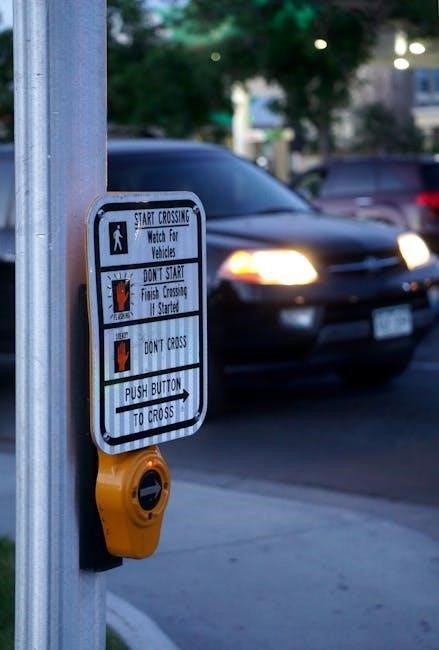The First Alert CO detector manual provides guidance on installation and maintenance, with
- step-by-step instructions
to ensure proper use and functionality of the device for optimal safety and performance always.
Overview of First Alert CO Detectors

First Alert CO detectors are designed to provide early warning of potential carbon monoxide threats, with a range of models available to suit different needs and installation requirements. The detectors use electrochemical sensing technology to detect CO levels and alert users with a loud alarm and voice alerts. They are easy to install and maintain, with some models featuring plug-in or battery-operated options. First Alert CO detectors are also designed to be interoperable with other safety devices, providing a comprehensive safety solution for homes and families. With their advanced technology and user-friendly design, First Alert CO detectors are a reliable choice for protecting against the dangers of carbon monoxide poisoning, and can be used in conjunction with other safety devices to provide a complete safety system. They are widely available and can be easily purchased online or in-store, with a variety of models to choose from.
Types of First Alert CO Detectors
First Alert offers a range of CO detectors, including plug-in, battery-operated, and hardwired models. The plug-in detectors are easy to install and can be placed in any standard electrical outlet. Battery-operated detectors offer more flexibility in terms of placement and are ideal for areas where outlets are limited. Hardwired detectors are more permanent and can be interconnected with other safety devices. Some models also feature voice alerts and location alerts, which can help identify the source of the CO leak. First Alert CO detectors are designed to meet various safety standards and regulations, ensuring reliable performance and protection against CO poisoning. With different models available, users can choose the one that best suits their needs and installation requirements, providing a safe and reliable solution for detecting CO levels in the home. They are designed to be user-friendly and easy to maintain.

Features of First Alert CO Detectors
First Alert CO detectors have advanced features including electrochemical sensing and voice alerts for enhanced safety and notification always with easy installation options available online.
Electrochemical CO Sensing Technology
First Alert CO detectors utilize electrochemical CO sensing technology to detect carbon monoxide levels in the air, providing accurate and reliable readings. This technology is designed to respond quickly to changes in CO concentrations, alerting users to potential dangers. The electrochemical sensor is a critical component of the detector, as it converts chemical reactions into electrical signals that trigger the alarm. With this technology, First Alert CO detectors can detect CO levels as low as 10 parts per million, ensuring early warning and prompt action to prevent harm. The use of electrochemical sensing technology in First Alert CO detectors has been proven to be highly effective in detecting CO and preventing accidents, making it a trusted choice for home safety. The technology is also relatively low maintenance and easy to integrate into existing home safety systems.
Interconnectivity and Voice Alerts
First Alert CO detectors offer interconnectivity and voice alerts, allowing users to receive timely warnings in the event of a CO leak. The detectors can be connected to other First Alert devices, creating a network of safety alarms that alert users to potential dangers. Voice alerts provide clear and concise warnings, making it easier for users to respond quickly and effectively. The interconnectivity feature also enables users to silence alarms from any connected device, reducing false alarms and minimizing disruption. With voice alerts and interconnectivity, First Alert CO detectors provide an added layer of protection and peace of mind for users, ensuring that they are always informed and prepared in the event of a CO emergency. This feature is especially useful in large homes or homes with multiple levels, where a CO leak may not be immediately apparent.

Installation and Maintenance
Proper installation and maintenance are crucial for optimal performance and safety always ensured.
Installation Requirements
To ensure proper installation, it is essential to follow the manufacturer’s guidelines and local regulations. The First Alert CO detector manual provides detailed instructions on installation requirements, including the recommended location and mounting height. Typically, CO detectors should be installed on every level of the home and near sleeping areas. The device should be at least 5 feet away from fuel-burning appliances and not directly above or beside them. It is also crucial to choose a location where the detector will not be obstructed by furniture or other objects. By following these installation requirements, homeowners can ensure their CO detectors are functioning correctly and providing optimal protection. The installation process is relatively straightforward, and the manual provides step-by-step instructions to help users complete the task successfully and ensure their safety always.
Testing and Maintenance
Regular testing and maintenance are crucial to ensure the proper functioning of the First Alert CO detector. The manual recommends testing the device monthly by pressing the test button to verify it is working correctly. Additionally, the detector should be cleaned regularly to prevent dust and debris from accumulating and interfering with its performance. The manual also advises replacing the battery annually or when the low-battery signal is activated. It is essential to keep the detector away from direct sunlight and extreme temperatures, which can affect its accuracy; By following the testing and maintenance schedule outlined in the manual, users can ensure their CO detector is always ready to detect potential carbon monoxide leaks and provide timely warnings to protect their families and homes from harm and danger always. This helps to prevent accidents and ensure safety measures are in place.

User Manuals and Guides
User manuals and guides for First Alert CO detectors are available online, providing detailed instructions and information for safe installation always.
Accessing User Manuals
To access user manuals for First Alert CO detectors, visit the official First Alert website and navigate to the support section, where you can find a list of available manuals by model number. The website also features a search function, allowing you to quickly find the manual for your specific device. Additionally, user manuals can be downloaded in PDF format, making it easy to print or save for future reference. Many online retailers, such as Amazon, also provide access to user manuals for First Alert CO detectors, often including them on the product page or in the customer reviews section. By consulting the user manual, you can ensure proper installation and maintenance of your CO detector, helping to keep your home and family safe from the dangers of carbon monoxide poisoning. This is important for optimal safety and performance always online.
Understanding Detector Limitations
It is essential to understand the limitations of your First Alert CO detector, as outlined in the user manual. The manual states that the detector may not respond to carbon monoxide on a different floor or in a separate area of the home. This is crucial information, as it may impact the placement and number of detectors needed to ensure complete coverage; By understanding these limitations, you can take steps to supplement your CO detection system, such as installing multiple detectors or using additional safety devices. The user manual provides detailed information on the detector’s capabilities and limitations, helping you to make informed decisions about your home’s safety. This information is vital to ensuring the effective use of your CO detector and maintaining a safe living environment, as specified in the manual and supported by online resources and reviews. Proper use is key.
